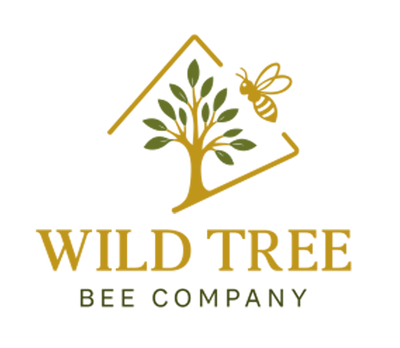What is Small Batch Honey?
Small-batch honey is honey that’s harvested, extracted, and bottled in limited quantities from a single apiary or bloom, not blended or mass-produced. Each batch reflects the unique nectar source, season, and location where the bees were working, giving it a distinct flavor, color, and aroma that can’t be replicated. At Wild Tree Bee Company, every batch is traced back to one specific harvest from one group of hives, ensuring purity, transparency, and a true taste of place, the way honey is meant to be experienced.
What makes honey raw?
Raw honey is honey that’s never heated, pasteurized, or finely filtered after it’s extracted from the comb. Once the frames are spun, it’s simply strained through a coarse mesh to remove wax and large particles, nothing more. This gentle process preserves the natural enzymes, pollen, propolis, and antioxidants that give raw honey its flavor, texture, and health benefits. Because it’s unprocessed and unblended, raw honey may appear slightly cloudy or contain tiny flecks of pollen or propolis, signs of authenticity that show it came straight from the hive, just as nature made it.
What makes raw honey better?
Raw honey tastes better because it’s ALIVE with all the natural elements that mass-produced honey strips away. Large commercial brands heat and ultrafilter their honey to keep it clear and uniform, but that process destroys delicate enzymes, pollen, and aromatic compounds that give real honey its depth of flavor. Wild Tree honey is never heated or blended, each batch comes from a single bloom and retains the wild floral notes, minerals, and subtle nuances of its origin. What you’re tasting is nature in its pure form: complex, vibrant, and unaltered, exactly the way the bees made it.
Why does honey crystalize?
Honey crystallizes because it’s a natural, unprocessed food — and that’s actually a good thing. Raw honey contains natural sugars (mostly glucose and fructose) along with pollen, enzymes, and trace minerals that act as tiny “seeds” for crystals to form. Over time, the glucose separates from the water and turns into fine crystals, especially in cooler temperatures. Some blooms, like wildflower or buckwheat, crystallize faster than others depending on their glucose-to-fructose ratio. Crystallization doesn’t mean the honey has gone bad, it’s a sign that it’s pure and unheated. To return it to a smooth texture, simply warm the jar gently in a bowl of hot water and stir until the crystals dissolve.
How many bees did it take to make my single jar of honey?
A single honeybee produces only about ¹⁄₁₂ of a teaspoon of honey in her entire lifetime, roughly one drop. That means it takes the lifetime work of around 800 bees to fill just one 12-ounce jar of Wild Tree honey. Every jar represents tens of thousands of foraging trips, miles of flight, and countless blooms visited — all gathered, concentrated, and stored by hand-sized teams of bees working in perfect coordination. It’s a small miracle of nature that makes every spoonful that much more meaningful.
What are the small particles I sometimes see in my honey?
Because our honey is raw and unfiltered, it can sometimes contain naturally occurring wax, propolis and pollen. These materials contribute to honey’s flavor complexity, aroma, texture, and nutritional value. Similar to cold pressed juices that retain plant solids or unfiltered olive oil that will often have a hazy sediment at the bottom. Honey is thick so it suspends. Raw honey is minimally processed and not finely filtered like commercial “clarified” honey.


